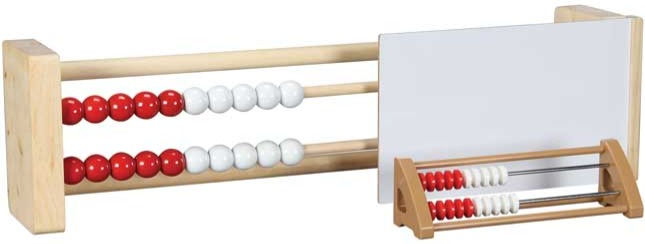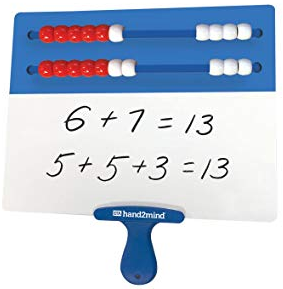What the Heck is the Rekenrek?
- jenndavis
- Jan 23, 2020
- 2 min read

The rekenrek is a math tool that allows children to develop number sense. The red and white beads on each row provide a built-in 5 & 10 structure. This helps students build number relationships that lead to more advanced strategies. You might have some children who automatically know that 6 + 7 = 13 and others who have to count out six objects, count out seven objects, and then count them all to determine it makes thirteen. Most manipulatives we use in K-2 classrooms do not help children get past the one-by-one counting and into more efficient strategies so the use of this math tool can be useful in developing efficint strategies.
“In the United States, the manipulatives most commonly used with young children are single objects that can be counted – Unifix cubes, bottle caps, chips, or buttons. While these manipulatives have great benefits in the very early stages of counting and modeling problems, they do little to support the development of the important strategies needed for automaticity. In fact at a certain point they begin to reinforce low-level counting strategies. For example, to solve 6 + 7 with Unifix cubes, children need to count out six, then seven, and then either ‘count on’ as they combine or (as is most common) count three times – first the two sets, then the total” (Fosnot & Dolk, 2001, p. 103).
With the rekenrek, children can model and solve problems the same as they would with Unifix cubes, but the built-in structure of the rekenrek allows children the flexibility to develop more advanced strategies as well.

Children develop more advanced strategies by building number sense. Number sense develops as children have experiences with numbers and they build relationships about numbers. John Van de Walle (2006) describes four relationships that need to be developed for children to gain number sense with numbers up to 20 so they can use those numbers but also understand them:
Spatial relationships – having a visual picture of an amount, also recognizing how many without counting by seeing a visual pattern (subitizing). One and two more, one and two less – this is not the ability to count on two or count back two, but instead knowing which numbers are one and two less or more than any given number by understanding the pattern of numbers. Benchmarks of 5 and 10 – because ten plays such an important role in our number system, and two fives make up ten, students must know how numbers relate to five and ten. Part-Part-Whole – seeing a number as being made up of two or more parts.
Check out these videos for more information. Also, consider reaching out to your math coach for more help and support in implementing this awesome math tool in your classroom.





Comments